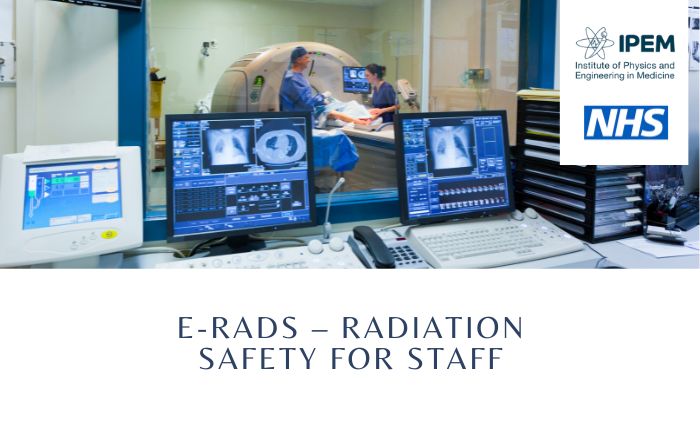
About Course
e-RADS – Radiation Safety for Staff
he e-RADS Radiation Safety for Staff is a high-quality, interactive, elearning course supporting the training of non-radiological staff exposed to ionising radiations.
The course is ideal for non-specialist staff who do not normally work with ionising radiations – including ward and theatre staff, porters, cleaners and mortuary staff. It also provides a useful introductory/refresher resource for trainees and colleagues working in departments using ionising radiations.
Updated in 2020, to reflect new technologies and techniques involving the use of ionising radiations in healthcare.
Written by the UK’s Top Clinical Specialists
This online training has been developed in the UK by the Institute of Physics and Engineering in Medicine (IPEM) (add hyperlink) and NHS England elearning for healthcare. (add hyperlink) This course meets the highest training standards and offers a world-class elearning experience.
